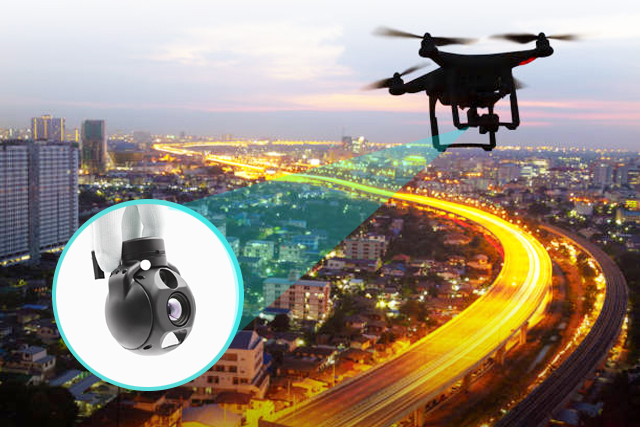In daily life, drone gimbals are primarily used to stabilize cameras. To be precise, a drone gimbal is a support device that can be adjusted from multiple angles.
As the requirements for image stability in film and television shooting become increasingly stringent, drone gimbals are also continuously evolving. Currently, in daily life, drone gimbals mainly come in three types: fixed gimbals, motorized gimbals, and stabilizing gimbals.
Fixed Gimbal
Typically used for shooting stationary objects. After mounting the camera on the fixed gimbal, you can manually adjust the angle according to actual needs to complete the shoot from a fixed position. For example, a camera tripod.
Motorized Gimbal
When using a fixed gimbal, the camera can only view a fixed area within its field of vision, creating significant monitoring blind spots.
If we add a motor to the fixed gimbal, users can control the motor to rotate, thereby expanding the gimbal's range of movement. Such motorized gimbals are generally used in surveillance cameras to enlarge the camera's observation area.
Stabilizing Gimbal
A stabilizing gimbal belongs to the motorized gimbal category. It features additional attitude control, allowing the object mounted on the gimbal to remain relatively stable.
On drones, we can install a stabilizing gimbal for the camera and pair it with sensors that detect attitude, known as gyroscopes. Using attitude control methods, it is possible to maintain stable imagery even during high-speed flights.
3-axis drone gimbals and 2-axis drone gimbals are common stabilization devices used in fields like photography and filmmaking. By affixing them to a camera or camcorder, they can effectively offset body movements, providing stable shooting results.
A 3-axis drone gimbal involves three axes mounted on motors to drive the elevation, horizontal rotation, and tilting movements of the gimbal, thus achieving stable shooting effects.
A 2-axis drone gimbal includes only two axes—the horizontal axis and the vertical axis—allowing for smooth movements in horizontal and vertical directions but not stabilizing tilting movements.
Stability Performance
Compared to the 2-axis drone gimbal, the 3-axis drone gimbal offers superior stability performance. Due to its additional pitch axis, it can offset the vibrations caused by the body's front and back movements, providing more stable shooting results.
Application Scenarios
3-axis drone gimbals are typically used in fields like film shooting, commercial advertising, and professional photography where higher shooting quality is demanded. On the other hand, 2-axis drone gimbals are lighter and more portable, suitable for non-professional shooting, travel photography, and mobile phone photography.

Although 3-axis drone gimbals provide additional stability, they are not always superior to 2-axis drone gimbals for industrial tasks. If a gimbal with a smaller size, lighter weight, optimized height and quality, and high adaptability to multiple drone platforms is needed, then a 2-axis drone gimbal is a very suitable choice. It provides the same level of image and video quality as a 3-axis drone gimbal but offers longer flight times. It can also be optimized for specific applications such as land surveying, 2D and 3D LiDAR mapping, and inspections of wind turbines, power lines, and bridges.
For example, when conducting bridge inspections, accessing the underside of the bridge can be a major obstacle. In such cases, a drone equipped with a front-facing two-axis gimbal allows the operator to get an unobstructed view from top to bottom. Hence, inspectors can see the span from below and the sides, collecting valuable visual data about these crucial areas of the bridge.